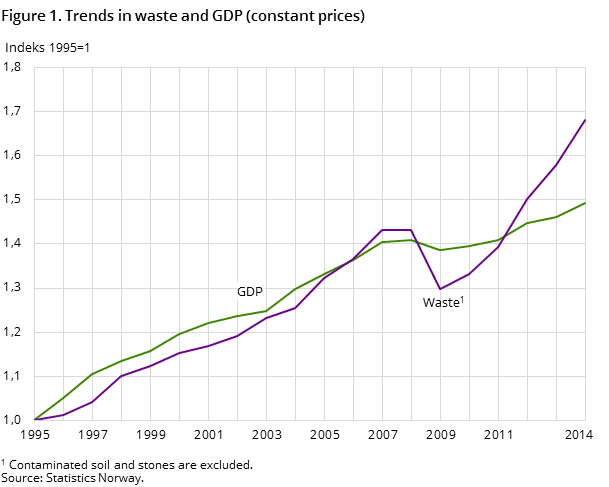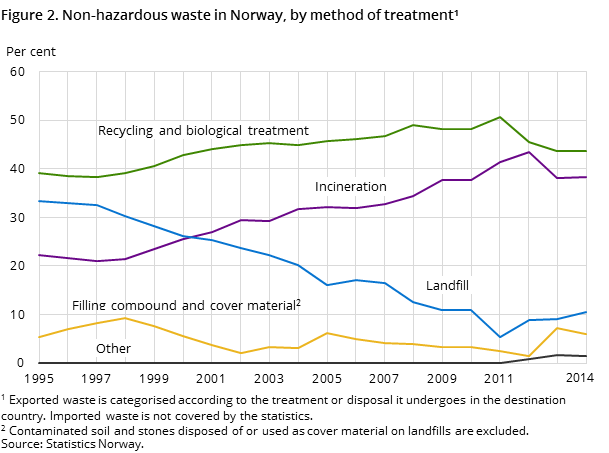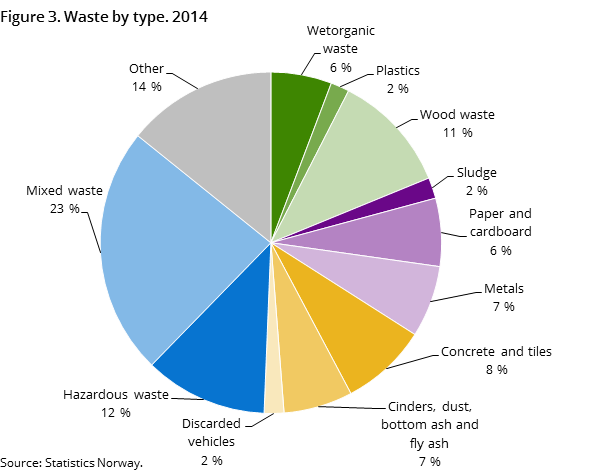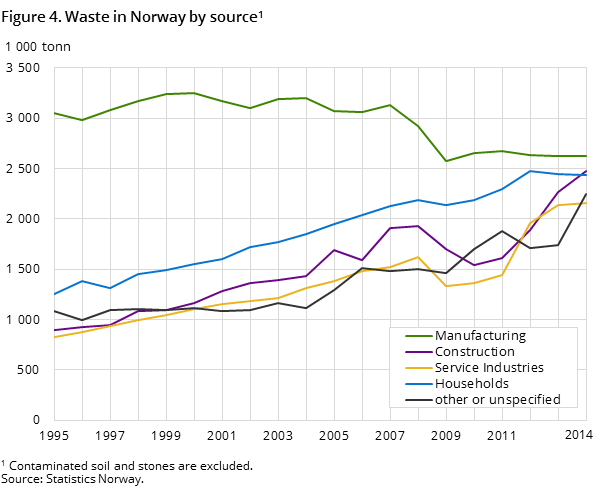Small increase in Norway’s waste
Published:
The total amount of waste in Norway increased by 7 per cent from 2013 to 2014. In 2014, a total of 11.9 million tonnes of waste was generated. This continues the trend seen in recent years, with an increase by several per cent each year.
- Full set of figures
- Waste accounts
- Series archive
- Waste accounts (archive)
The amount of waste that Norway generates has been steadily increasing over the last few years, and this tendency continued in 2014. The increase from 2013 to 2014 was 7 per cent. At the same time, the value added measured by GDP (constant prices) has increased by two per cent from 2013 to 2014.
Fraction of recovered waste remains stable
In 2014, the total recovery of non-hazardous waste undergoing known treatment was 80 per cent; a decrease by one per cent from the two previous years. This corresponds to 8.1 million tonnes. In 2014, 29 per cent of non-hazardous waste undergoing known treatment was recovered for energy, while 37 per cent was subject to material recovery.
The waste amounts undergoing material recovery and incineration are similar. A total of 4.2 million tonnes of waste was recovered for material in 2014, and 4.2 million tonnes was incinerated. While asphalt, followed by metals and paper and cardboard constitute the largest fractions for material recovery, mixed waste followed by wood waste still constitute the largest fractions for incineration.
The amount of waste going to landfill also increased in 2014, when around 11 per cent of non-hazardous waste undergoing known treatment was deposited. The largest increase in deposited waste was due to an increase in deposited concrete and bricks. However the largest fraction being deposited was still hazardous waste.
Most mixed waste
The major waste material categories in 2014 were mixed waste, which made up 23 per cent of the total, followed by hazardous waste with 12 per cent and wood waste with 11 per cent. These were the same three categories of waste that topped the list in 2012 and 2013.
Most waste from the manufacturing industry
The manufacturing industry was the source of the largest amount of waste, with 2.6 million tonnes or 22 per cent of the total in 2014, followed by construction and demolition industry (21 per cent) and households (20 per cent). The waste amounts from the manufacturing industry and households were similar to the corresponding amounts in 2012 and 2013. However, waste from building and construction had a sharp increase from 2012 to 2014. This was partly due to a real increase and partly because a new source of data on asphalt from construction was added before calculating the 2013 figures.
Masses for landfilling and cover materials
The amounts of slightly polluted soil that were deposited also increased from 2013 to 2014. In 2014, 1.5 million tonnes were sent to ordinary landfills and 7 000 tonnes were used as cover material. This is a small increase compared to 2013, when a total of 1.4 million tonnes was deposited or used as cover materials.
Contact
-
Camilla Skjerpen
-
Eva Vinju
-
Statistics Norway's Information Centre




